Emotions are the feelings that kids have when they respond to different situations. They are very important for a child’s development. Emotions help kids understand their social world. They also help kids know their needs and what they want.
5 Basic emotions for kids
Here are the five core emotions that are often emphasized in child development:
- Happiness
- Sadness
- Anger
- Fear
- Disgust
1- Happiness:
A happy emotional state is marked by feelings of joy, contentment, and satisfaction. Happiness is one of the best-known emotions. It is essential for a child’s overall well-being.
Examples: Smiling, laughing, feeling content, and showing excitement.
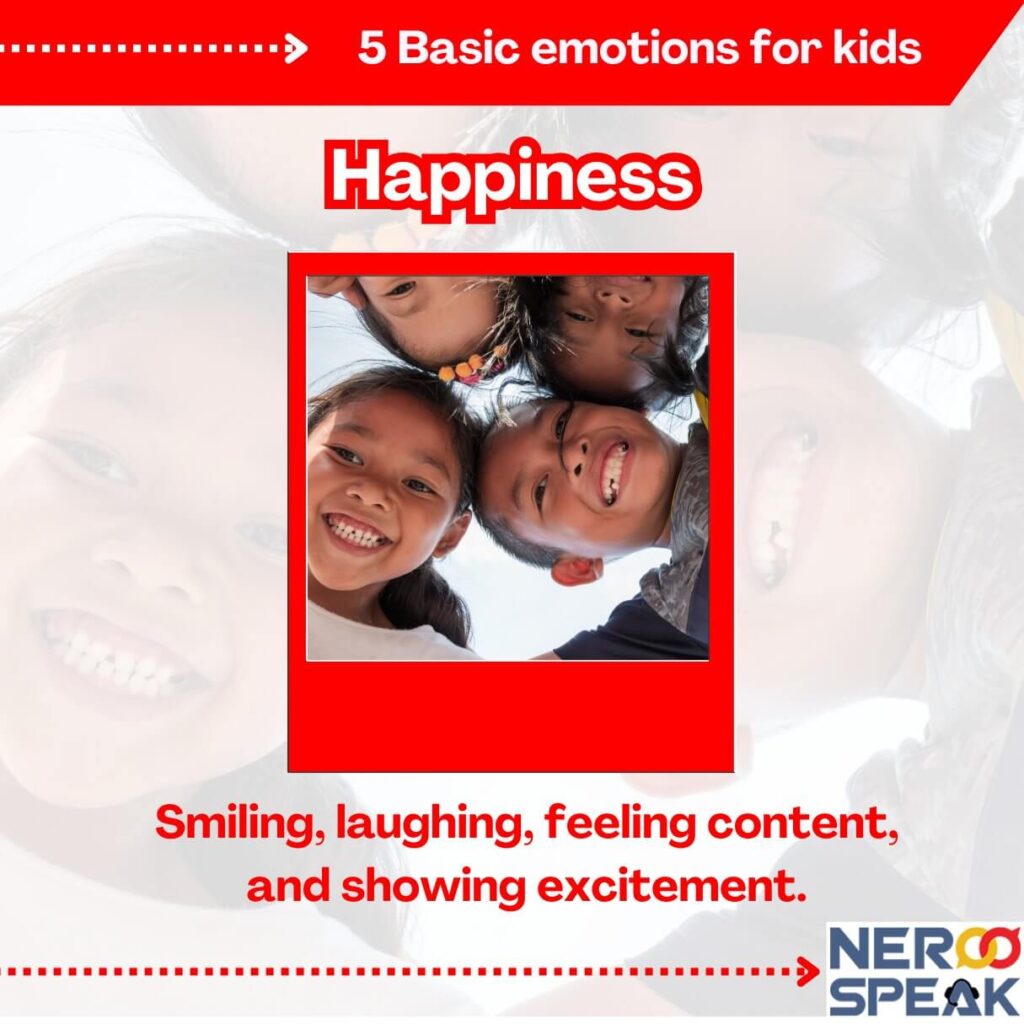
2- Sadness:
A negative emotional state often comes from loss, disappointment, or unmet hopes. Sadness helps kids handle losses and changes.
Examples: Crying, feeling down, withdrawing from activities, and expressing sorrow.
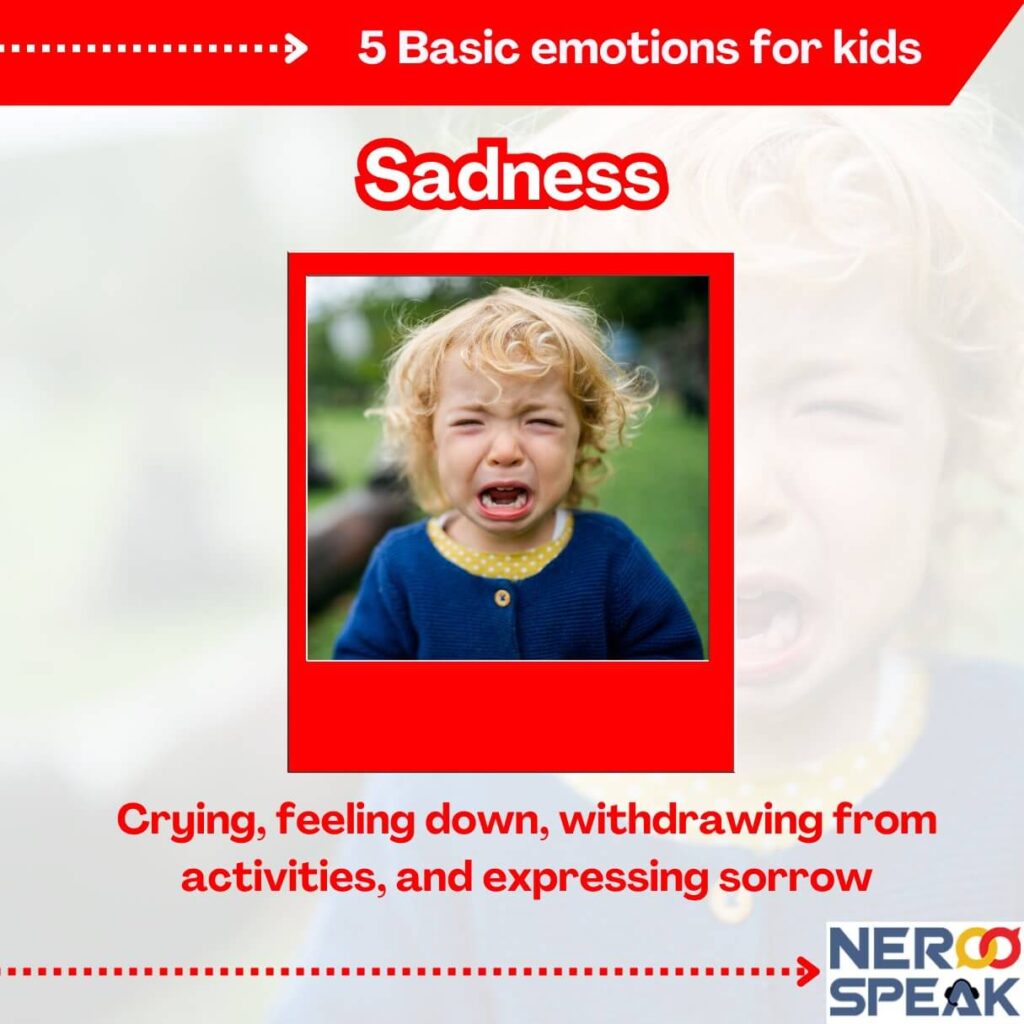
3- Anger:
A strong feeling of displeasure or hostility, often in response to a perceived threat or frustration. Anger is a natural response to frustration and can be managed through healthy coping mechanisms.
Examples: Yelling, frowning, physical aggression, and irritability.
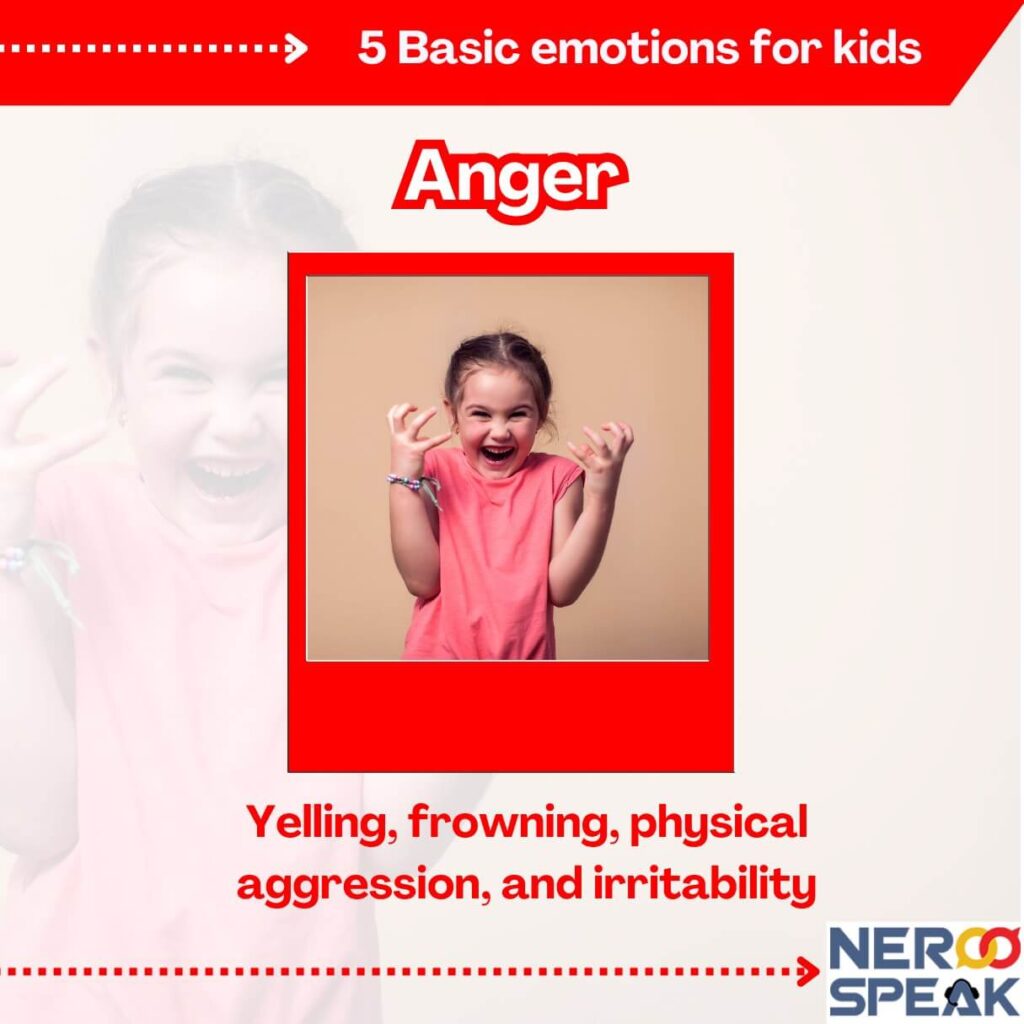
4- Fear:
Fear is an emotional reaction to a threat or danger. It helps keep children safe by warning them about risks.
Examples: Running away, hiding, shaking, or feeling anxious.
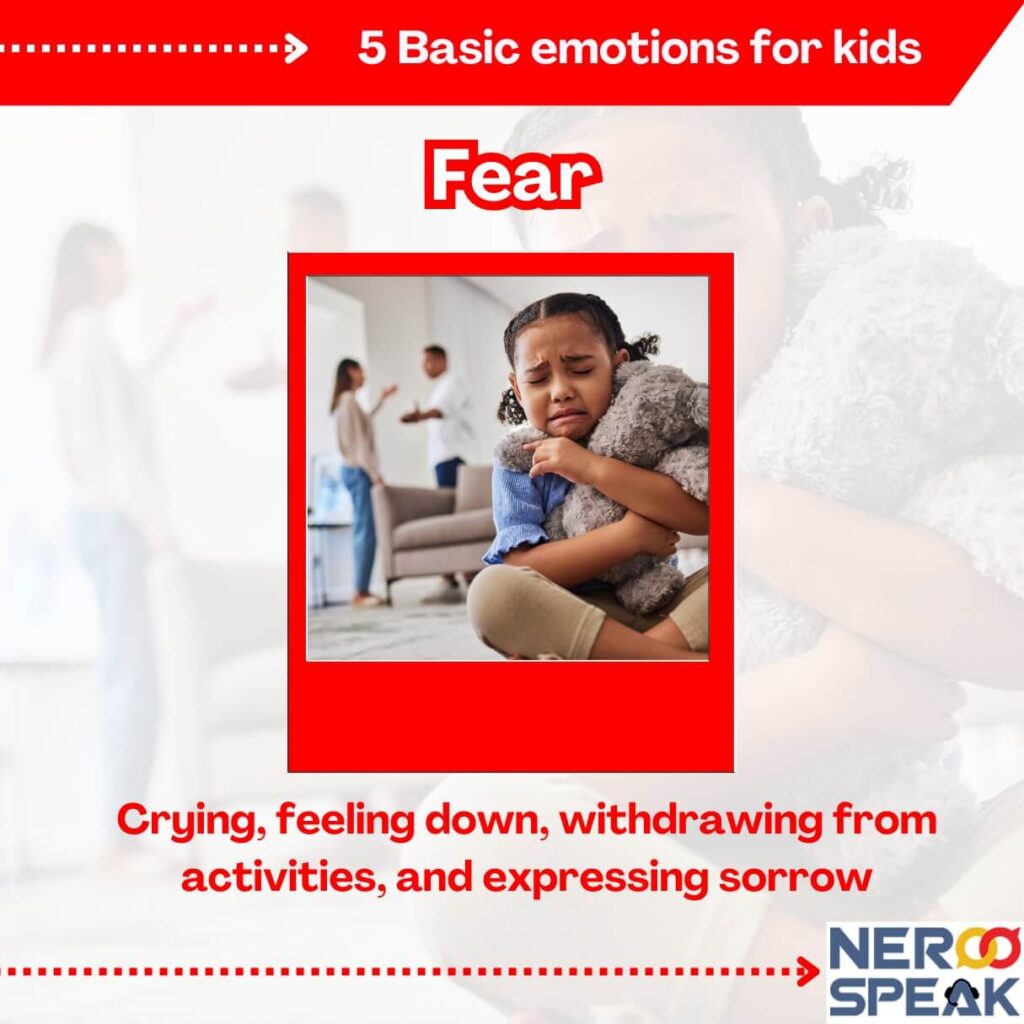
5- Disgust:
Disgust is a strong feeling of dislike or disapproval. It comes from things that are unpleasant or offensive. This feeling helps children stay away from things that might be harmful, like spoiled food.
Examples: Facial expressions like wrinkling the nose, pushing away objects, or saying “yuck”.
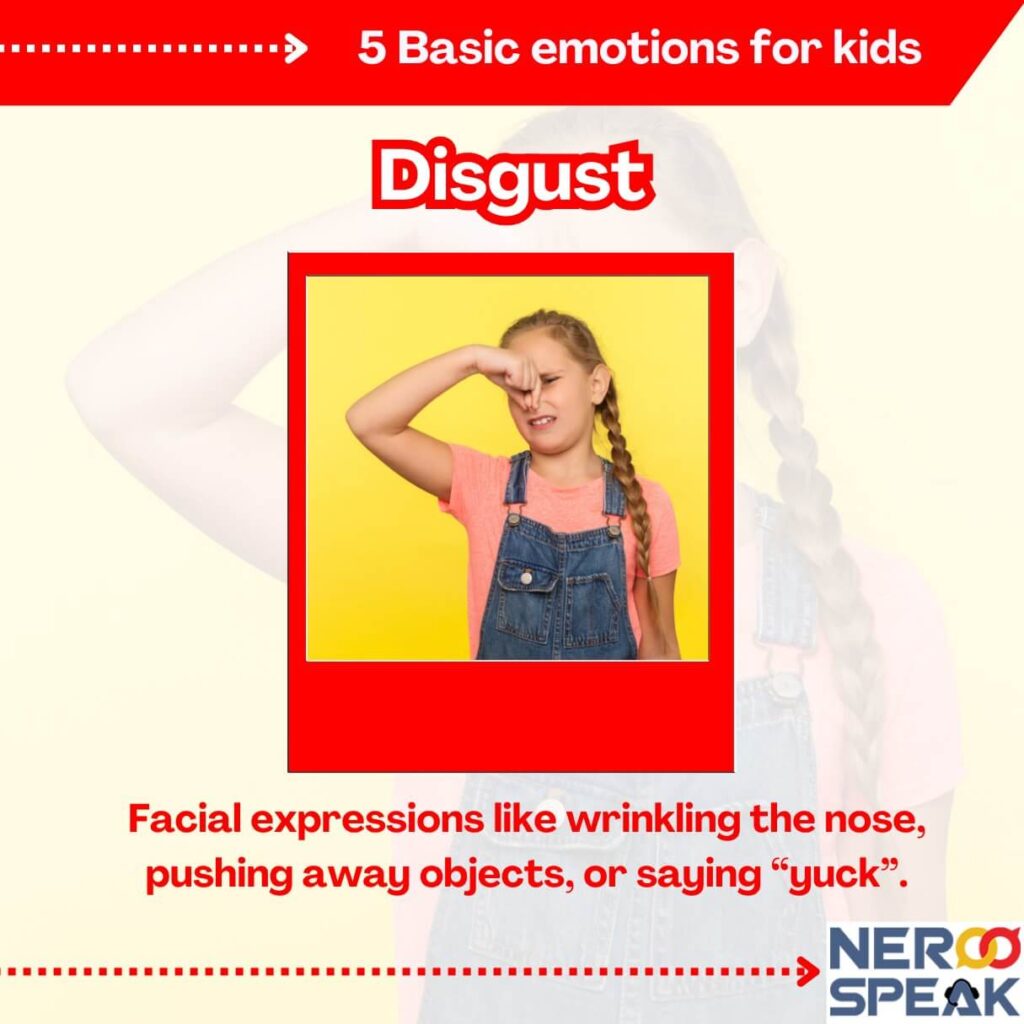
These main emotions are important for helping children understand and show their feelings. Teaching kids about these emotions can help them develop emotional intelligence and navigate social interactions more effectively.
We hope you had a good read!!
People also ask
What Are the 30 Emotions?
Here’s a list of 30 commonly recognized emotions:
- Joy
- Sadness
- Anger
- Fear
- Surprise
- Disgust
- Love
- Guilt
- Shame
- Pride
- Excitement
- Curiosity
- Contentment
- Embarrassment
- Jealousy
- Compassion
- Loneliness
- Relief
- Gratitude
- Hope
- Frustration
- Nervousness
- Confusion
- Admiration
- Envy
- Trust
- Regret
- Anticipation
- Care
- Resentment
These emotions can be strong or weak. They can also be simple or complicated. In real life, they can mix together or connect.
What Are the Basic Emotions of Children?
Children mainly feel and show these basic emotions:
- Joy
- Sadness
- Anger
- Fear
- Surprise
- Disgust
These six feelings are the same for everyone and are part of early growth. As kids get older, they learn more emotions like guilt, pride, and understanding of others.
What Are the 15 Emotional Reactions?
Emotional reactions are how people feel or act in different situations. Here are 15 common emotional reactions:
- Happiness
- Sadness
- Anger
- Fear
- Surprise
- Disgust
- Worry
- Excitement
- Frustration
- Embarrassment
- Guilt
- Shame
- Relief
- Jealousy
- Hope
These reactions depend on experiences, the situation, and how mature someone is with their feelings.
How to Describe Emotions to Kids?
- Use Simple Words: Explain feelings using words they know. For example, “Anger is when you feel upset and want to shout or stomp.”
- Relate to Situations: Use examples from their own lives, like “You felt happy when you got that new toy, right?”
- Use Aids: Pictures or emojis showing feelings can help kids see how they feel.
- Storytelling: Tell examples through characters in books or movies: “The bunny felt scared because it was dark.”
- Teach Expression: Teach them phrases like “I feel sad” or “I am frustrated” to help them share their feelings.
- Normalize Feelings: Let them know that every feeling is okay: “It’s okay to feel angry, but we need to talk about it calmly.”
- Helping children understand emotions builds their skills in managing feelings. This helps them feel more in control
Why wait? Explore insightful articles on our website NerooSpeak!
- Indoor Activities for Kids Near Me as a Mom
- 50 Confusing English Words and Their Meanings
- The Best Kids Dictionaries: Online and Print Resources for Young Learners
- 50 Creative Adventure Themes for Kids

Ali Mohammad is a SEO Specialist, Content Writer, and WEB Developer with over 4 years of experience in WEB. He has a strong background in Content Writing gained through SEO Companies. He holds a Master Degree in Communications Engineering from Tishreen University and is a certified professional. Ali is passionate about Business and Engineering and enjoys helping readers by sharing his knowledge.